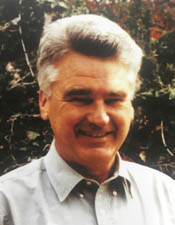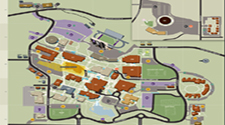Videos of Physics Demonstrations
About the Authors
 Dr. Farhang Amiri has been a member of Physics Department at Weber State University since 1984. In addition to working and publishing in his field of research in elementary particles, Dr. Amiri remains active in developing laboratory and lecture demonstration materials for physics. He has also created software and computer animations of physics experiments that are used in various physics courses. He continues to publish his work in scientific journals. Link to Professor's webpage: Dr. Amiri's webpage
Dr. Farhang Amiri has been a member of Physics Department at Weber State University since 1984. In addition to working and publishing in his field of research in elementary particles, Dr. Amiri remains active in developing laboratory and lecture demonstration materials for physics. He has also created software and computer animations of physics experiments that are used in various physics courses. He continues to publish his work in scientific journals. Link to Professor's webpage: Dr. Amiri's webpage
 Dr. Ron Galli has been with the Physics Department at Weber State University since 1963. In the past, he has served as the chair of the Physics Department as well as the dean of the College of Science. Dr. Galli has been active in developing several novel demonstrations for undergraduate courses. He has invented and constructed a mechanical model of a cat that demonstrates how a falling cat flips over from an inverted position and lands on its feet. He continues to remain active in research and to publish in physics journals. Link to Professor's webpage: Dr. Galli's webpage
Dr. Ron Galli has been with the Physics Department at Weber State University since 1963. In the past, he has served as the chair of the Physics Department as well as the dean of the College of Science. Dr. Galli has been active in developing several novel demonstrations for undergraduate courses. He has invented and constructed a mechanical model of a cat that demonstrates how a falling cat flips over from an inverted position and lands on its feet. He continues to remain active in research and to publish in physics journals. Link to Professor's webpage: Dr. Galli's webpage
Project Overview
The initial motivation for this project was to provide access to physics demonstrations for online physics students. One of the authors (Dr. F. Amiri) has developed over one hundred computer animation experiments that have become a major component of the online introductory physics course at Weber State University. However, it was determined that, in addition to computer animated experiments, the online students should also be exposed to actual physics demonstrations and see real experiments involving physics equipment.
To address these issues, Farhang Amiri together with Ron Galli, decided to develop a comprehensive video library of physics demonstrations. Dr. Galli has been involved with physics demonstrations over many years, including creating several demonstrations of his own. After agreeing on the methods of developing and presenting the experiments and demonstrations, the work of producing the videos began in the summer of 2003. A goal was established that the demonstrations would be used not only for online physics courses but also extended to regular on-campus courses. In the process of producing these videos, it became apparent that they would also be very useful to faculty and students at other institutions.
The idea was that the demonstrations should be recorded in a classroom environment and be comparable to actual lecture presentations made to students in regular physics courses. These videos have been designed so that they can be used by physics faculty at any institution. The videos can be used by faculty to supplement their own lectures and demonstrations through the showing of all or parts of these videos to the students. Also, the videos have been produced with the goal in mind that faculty could watch them and then reconstruct their own live demonstrations. The required equipment and supplies, in most cases, would likely be available in their own respective departments.
We have produced demonstration videos containing approximately 200 physics concepts. These videos average about 5 minutes each and encompass almost all topics which are covered in the standard lower division physics courses. In the videos, the narrative description and explanations of the principles are purposefully kept brief to allow for the faculty to provide their own complete explanations. As each of the demonstrations was produced, care was taken to ensure the quality of the videos and the accuracy of the physical principles being portrayed. Each video is accompanied by a complete list of the equipment which was used. Also, a brief written explanation of each video is included.
Potential Uses
- The videos can be used by faculty to supplement their own lectures and demonstrations through the showing of all or parts of these movies to the students.
- Faculty could watch a movie of a particular demonstration and then reconstruct their own live demonstrations. The list of all needed components for each movie is provided.
- The videos can be used as part of the class assignments. As an example, students can watch a particular movie and answer questions related to the phenomena being demonstrated. The questions can be either conceptual or quantitative. An example of the latter case is the demonstration of "drop objects". In that case, a student may watch the movie and then estimate the falling distance and the time of falling and use these results to calculate the acceleration of gravity.
- Students could have access to the videos outside of class for purposes of course preparation, review of a given lecture, or to further their understanding of the concepts.
- The movies can be a valuable resource for the online students who do not have the opportunity of observing the actual live classroom demonstrations.
Demonstration Videos
Newton's First Law of Motion
Newton's Second Law of Motion
Newton's Third Law of Motion
Free Fall and Projectile Motion
Gravity, Circular Motion, and Satellites
Linear Momentum
Work and Energy
Torque, Center Mass, and Rotational Inertia
Angular Momentum
Pressure and Density
Waves and Sound Waves
Thermal Physics
Electrostatics
Electric Circuits
Capacitance
Magnetism
Faraday's Law
Inductance
Reflection
Refraction
Lens Defects
Interference and Diffraction
Polarization of Light
Electromagnetic Waves
Modern Physics
Office hours
Monday - Thursday
7:30 a.m. - 4:30 p.m.
Mailing address
Weber State University
Department of Physics
1415 Edvalson St., Dept. 2508
Ogden, UT 84408-2508
